Polish Fried Dough – Pączki
 It was a pretty special day. Actually, it was pretty mundane as I was at home working on some jewelry when I glanced through the day’s events online, only to discover there was a Polish Festival going on at that very minute in Golden Gate Park. I had to get there fast — it was already 2:00 in the afternoon! The trip was a total gamble. I checked out a car and drove pell-mell through the streets of San Francisco, hoping against hope that part of the traditional foods being offered at the festival might be Pączki, the Polish version of a jelly doughnut. When I arrived, there was a long line of people waiting to get into the building. I got in that line and waited too — then I noticed a guy who just sauntered by and just walk in. I asked the security guard what the line was for (assuming it was the entrance) and was told it was for food. Before I am going to spend an hour in line for food, I at least wanted to see if they had what I was looking for…
It was a pretty special day. Actually, it was pretty mundane as I was at home working on some jewelry when I glanced through the day’s events online, only to discover there was a Polish Festival going on at that very minute in Golden Gate Park. I had to get there fast — it was already 2:00 in the afternoon! The trip was a total gamble. I checked out a car and drove pell-mell through the streets of San Francisco, hoping against hope that part of the traditional foods being offered at the festival might be Pączki, the Polish version of a jelly doughnut. When I arrived, there was a long line of people waiting to get into the building. I got in that line and waited too — then I noticed a guy who just sauntered by and just walk in. I asked the security guard what the line was for (assuming it was the entrance) and was told it was for food. Before I am going to spend an hour in line for food, I at least wanted to see if they had what I was looking for…
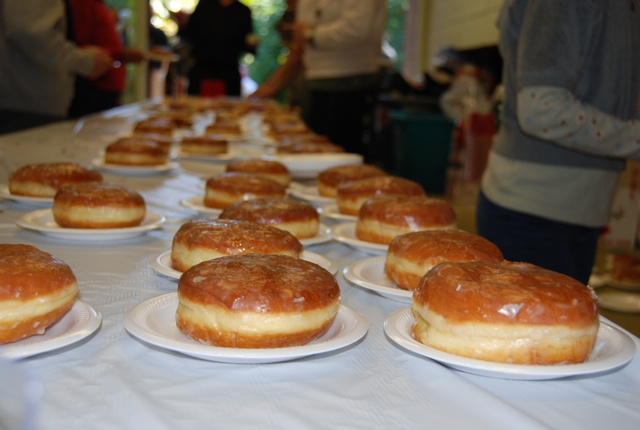 The line for hot food was incredibly long. Upwards of an hour plus, if not longer. It winded its way into the large room with banquet tables where many were already feasting on boiled dumplings, sausages, and more. But then I saw it – up against the back wall was a very long table set with sweets. Fortunately, that table didn’t require the tickets that were sold for the hot food and a young girl — probably 9 or 10 years old — was taking cash for the desserts.
The line for hot food was incredibly long. Upwards of an hour plus, if not longer. It winded its way into the large room with banquet tables where many were already feasting on boiled dumplings, sausages, and more. But then I saw it – up against the back wall was a very long table set with sweets. Fortunately, that table didn’t require the tickets that were sold for the hot food and a young girl — probably 9 or 10 years old — was taking cash for the desserts.
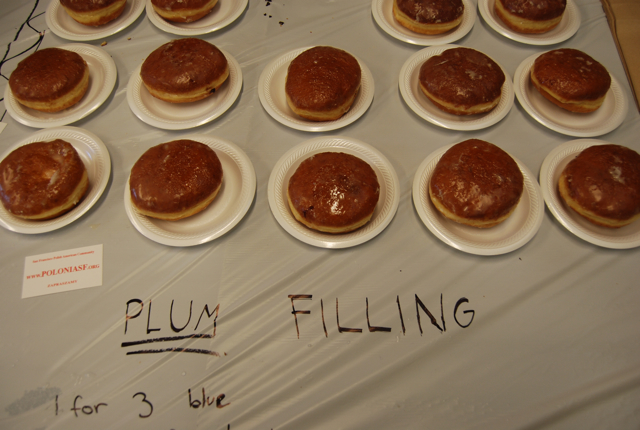 What I was looking for came au natural (no filling) or with plum filling. And nearby, I saw a gentleman working furiously to fill these Pączki. And very fortunate for me, Edmund was more than willing to help me learn more about this ethnic specialty.
What I was looking for came au natural (no filling) or with plum filling. And nearby, I saw a gentleman working furiously to fill these Pączki. And very fortunate for me, Edmund was more than willing to help me learn more about this ethnic specialty.
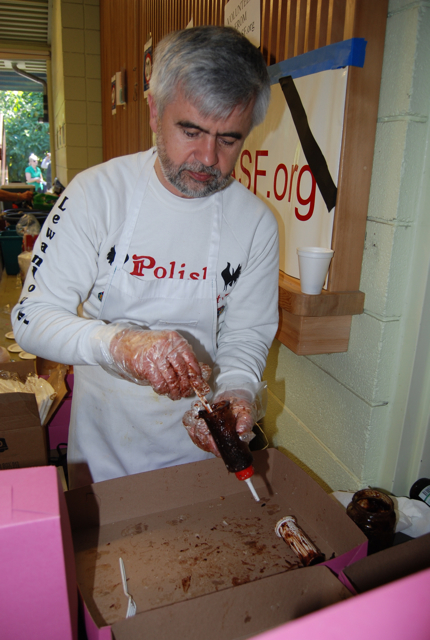 There were several dozen pink boxes and Edmund of the San Francisco Polish American Community was hand-filling the empty Pączki, so it was obvious the dough part had been made elsewhere. “How original are they to what you get in Poland?” I asked. Edmund confirmed a fear; the original recipe is a very rich, egg-based, yeast-risen dough. “Here in the states,” he told me “they had to find someone to make them for us. We use a Pillsbury product that is more like an American donut.” Even now, in Poland, it is hard to find them freshly made and, sadly Edmund confirmed, a lot of stores have resorted to pre-made mixes. They had to resort to finding a manufacturer that would make them as close as possible to a traditional Pączki, but Edmund admits that it pales in comparison to what he has tasted — when he can find — in Poland.
There were several dozen pink boxes and Edmund of the San Francisco Polish American Community was hand-filling the empty Pączki, so it was obvious the dough part had been made elsewhere. “How original are they to what you get in Poland?” I asked. Edmund confirmed a fear; the original recipe is a very rich, egg-based, yeast-risen dough. “Here in the states,” he told me “they had to find someone to make them for us. We use a Pillsbury product that is more like an American donut.” Even now, in Poland, it is hard to find them freshly made and, sadly Edmund confirmed, a lot of stores have resorted to pre-made mixes. They had to resort to finding a manufacturer that would make them as close as possible to a traditional Pączki, but Edmund admits that it pales in comparison to what he has tasted — when he can find — in Poland.
As I suspected, the Pączki was lacking; in fact, it was so close to Krispy Kreme in staleness that was only justified by its filling, which I loved. Edmund was right, these were meager replicas to a real thing that I am unlikely to try unless I try to make them myself, or I travel to Poland. But I didn’t mind; I was having a great time regardless.
Then I met a young man whose name is named Eryk. Aside from the table with the Pączki was a large, plastic-lined box filled with 14″ fried disks of dough. I asked Eryk if he knew what they were. “Fried dough,” he answered. Did he know the Polish name? Nope. I asked back at the Pączki table and the woman manning that stand who told me that she only knew them as Fried Dough as well and they were made for the children performers who might not want the Pączki. I turned back to see if I could swipe a sample, only to watch them being whisked away to a back room. Eryk knew I was interested and scurried after to see if he could get me one, but they had already been distributed. Thanks anyway; I was completely charmed.
Wandering outside toward the Botanical Gardens, I met a beautiful woman, Oksana, who is actually from the Ukraine. I was really curious to talk to someone about the Pączki being served here and what was served in Poland. She wasn’t sure, but told me she had some friends nearby. Under a shady tree in the Botanical Garden sat Angie and Jedd and children. Here is where I started to learn a lot.
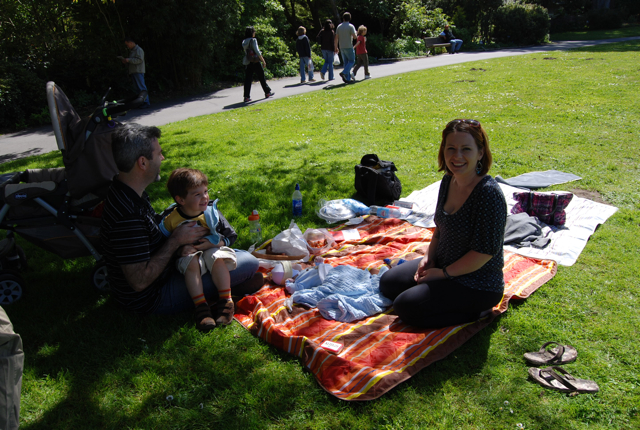 I was pronouncing Pączki incorrect as pack-shzee. They couldn’t quite understand what I was asking about. It seems the “ą” is sounded like the Buddhist chant, “ohm” with a slight “n” to it so that Pączki to me sounds like “pohnshkee.” Angie’s grandmother makes them and in Poland, they are much rounder in shape with a more golden color. Oksana said they are very familiar to the Ukrainian version pampushky or пампушки. In the Ukraine, they are often made with Farmer’s cheese or topped with marmalade. But nothing like what was being served at the festival today. Oksana and her husband and Angie and family were so helpful and taught me so much and I was so incredibly grateful.
I was pronouncing Pączki incorrect as pack-shzee. They couldn’t quite understand what I was asking about. It seems the “ą” is sounded like the Buddhist chant, “ohm” with a slight “n” to it so that Pączki to me sounds like “pohnshkee.” Angie’s grandmother makes them and in Poland, they are much rounder in shape with a more golden color. Oksana said they are very familiar to the Ukrainian version pampushky or пампушки. In the Ukraine, they are often made with Farmer’s cheese or topped with marmalade. But nothing like what was being served at the festival today. Oksana and her husband and Angie and family were so helpful and taught me so much and I was so incredibly grateful.
Of course now I’ve been hunting around the ‘net at recipes. It isn’t just fresh eggs and yeast. It is also heavy cream and rum or brandy. I am smitten. This very well might be the first recipe I will try out on my newly-purchased Waring Fryer. Thank you again, all; Edmund and Eryk, Oksana and Angie (and husbands!), and the entire Polish community for having a festival which hearkens back to my own Northern European heritage. The primal voices of my ancestors are calling to me and I must answer the call…

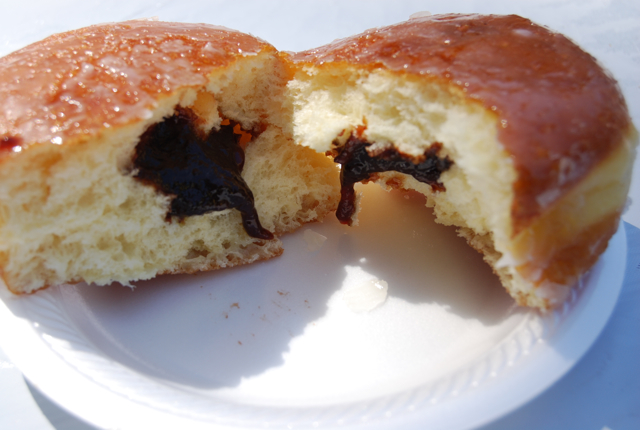
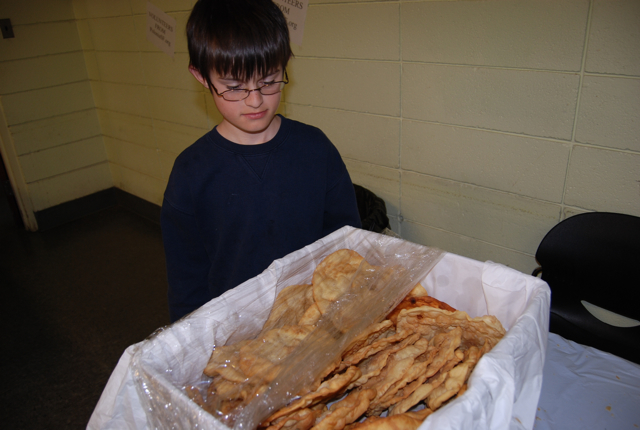
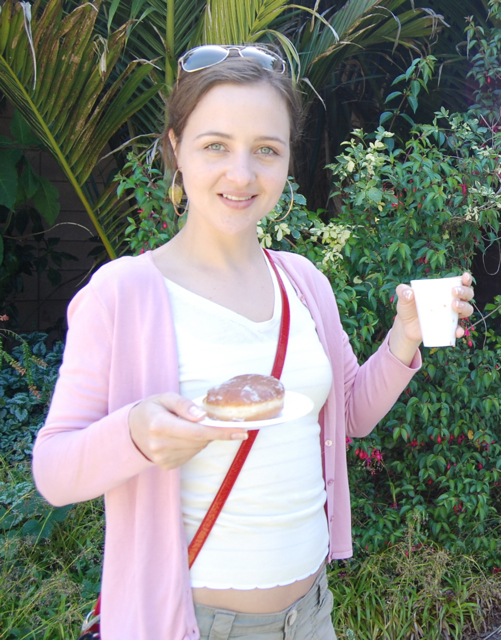
May 7th, 2010 at 5:54 pm
It was a pleasure meeting you at the Polish Festival, and yes, I am 10. I was the one with my mom serving the Pączki. Thanks a lot
-Kinga and family
June 6th, 2010 at 12:37 pm
[…] thought of just trying some basic recipe just for experimentation purposes. Then I stumbled upon a Polish festival and learned about a glorious fried dough known as Pączki. I learned that the incredibly rich, […]
June 10th, 2010 at 2:58 pm
[…] a month ago, I waxed poetic about the discovery of Polish Pączki (May 3rd, to be exact). I am so enthusiastic about these morsels of fried goodness that I decide to […]